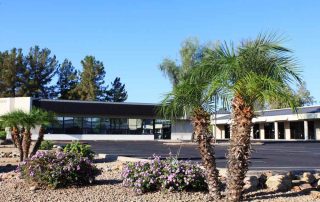Xeriscaping is One of the Many Design Jobs that we Specialize in!
Pugh's Earthworks Xeriscaping is a sustainable landscaping technique that uses plants that require little or no supplemental water once they are established. Xeriscaping focuses on using plants that have a low water requirement and attract beneficial insects to the garden. Plants used in xeriscaping include succulents, cacti, meadow rue, sagebrush and yucca. Grasses used in xeriscaping include buffalo grass and saw-tooth oak. Flowering shrubs and trees that work well for xeriscaping include aloe vera, hibiscus and coral bean. Rocks used in a xeriscape are typically smaller than those used in other types of landscaping because they do not retain as much heat. It is an environmentally friendly landscaping technique. It involves using native plants and rocks to create a landscape that requires less maintenance and water, thereby conserving natural resources. Xeriscaping can reduce your carbon footprint by reducing your use of fossil fuels and pesticides. You will also be contributing to the health of our planet by reducing storm water runoff into rivers, streams and lakes (which often contains chemicals from household products). Implementing this landscaping technique requires using native plants, mulch and rock to create a garden that requires less watering. The term "xeriscape" comes from the Greek word xeros, which means dry or parched. It's also known as water-conserving landscaping or environmentally friendly landscaping. Xeriscaping focuses on using plants that require little or no supplemental water once they are established. Plants that attract beneficial insects to the garden, such as butterfly bush (Buddleia) and trumpet creeper (Campsis radicans), can be used in xeriscaping. These plants also provide food for birds, bees and other pollinators. Xeriscape gardens may include some plants with a low water requirement such as native grasses and succulents like sedum or sempervivum. Xeriscaping is an environmentally friendly way to landscape a yard. It uses native plants and hardy shrubs, which can withstand the region’s extreme weather conditions without requiring much maintenance. Xeriscape also requires less water than traditional landscaping because it does not use any natural or man-made materials such as mulch or fertilizer. Xeriscaping is a type of landscaping that focuses on using plants that require little or no supplemental water once they are established. Plants that attract beneficial insects to the garden, such as butterfly bush (Buddleia) and trumpet creeper (Campsis radicans), can be used in xeriscaping. These plants also provide food for birds, bees and other pollinators. Xeriscape gardens may include some plants with a low water requirement such as native grasses and succulents like sedum or sempervivum.[1] Xeriscaping is an environmentally friendly way to landscape a yard. It uses native plants and hardy shrubs, which can withstand the region’s extreme weather conditions without requiring much water. Xeriscaping uses plants that have a low water requirement and attract beneficial insects to the garden. Xeriscaping is a landscaping technique that uses plants that have a low water requirement and attract beneficial insects to the garden. The goal of xeriscaping is to create an environment that requires little maintenance, while also protecting our environment [...]

